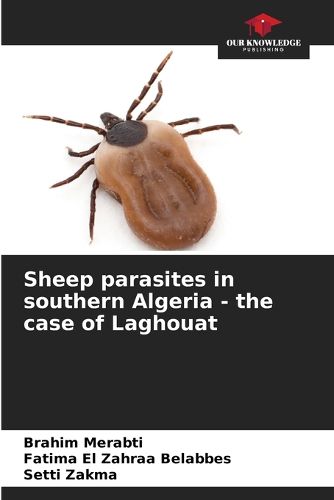Readings Newsletter
Become a Readings Member to make your shopping experience even easier.
Sign in or sign up for free!
You’re not far away from qualifying for FREE standard shipping within Australia
You’ve qualified for FREE standard shipping within Australia
The cart is loading…






This study is devoted to researching and identifying a number of parasites (endoparasites, haemoparasites and ectoparasites) in sheep in the Wilaya of Laghouat. The aim was to assess their prevalence and study the influence of certain parameters on parasite development. The study was carried out between November and March 2020 on 128 head of sheep on 8 farms. Various methods were used, including direct examination, techniques after concentration (flotation, sedimentation) and after staining, namely lugol and faushine staining for mesoparasites, and MGG staining for haemoparasites. Microscopic analyses revealed an overall infestation rate of 66.04%. The following parasites were found: strongyloides (37%), followed by eimeria spp (19.23%), cryptosporidium spp (16.66), cooperia spp (14.10%) and haemonchus spp (12.82). For ectoparasites: lice (linognathus africanus), (linognathus ovillus), (linognathus pedalis), (linognathus stenopsis), ticks (Rhipicephalius sanguineus), (ixode ricinus).
$9.00 standard shipping within Australia
FREE standard shipping within Australia for orders over $100.00
Express & International shipping calculated at checkout
This study is devoted to researching and identifying a number of parasites (endoparasites, haemoparasites and ectoparasites) in sheep in the Wilaya of Laghouat. The aim was to assess their prevalence and study the influence of certain parameters on parasite development. The study was carried out between November and March 2020 on 128 head of sheep on 8 farms. Various methods were used, including direct examination, techniques after concentration (flotation, sedimentation) and after staining, namely lugol and faushine staining for mesoparasites, and MGG staining for haemoparasites. Microscopic analyses revealed an overall infestation rate of 66.04%. The following parasites were found: strongyloides (37%), followed by eimeria spp (19.23%), cryptosporidium spp (16.66), cooperia spp (14.10%) and haemonchus spp (12.82). For ectoparasites: lice (linognathus africanus), (linognathus ovillus), (linognathus pedalis), (linognathus stenopsis), ticks (Rhipicephalius sanguineus), (ixode ricinus).